Join More Than 50,000+ Subscribers and get latest camera news and rumors
NEW CAMERA VIDEOS ON YOUTUBE
|
By admin, on June 11th, 2025
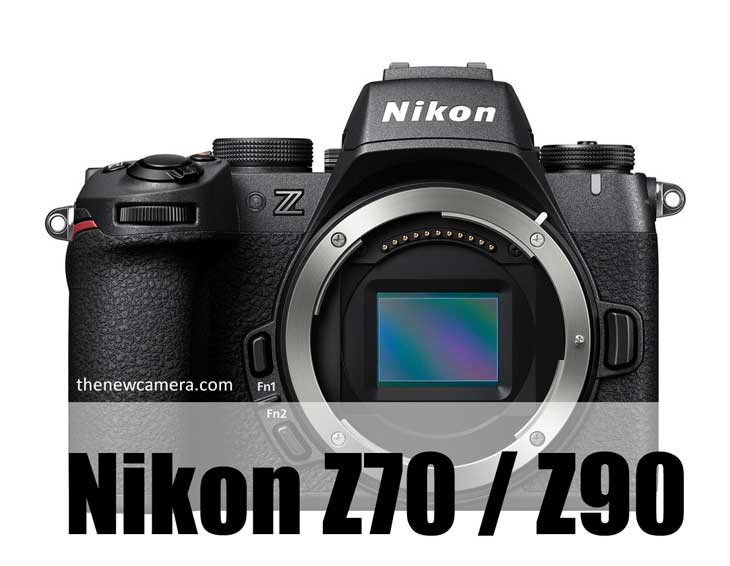
Chinese sources suggest that Nikon’s mysterious model is coming this year. So far, we know that the Nikon Z9 Mark II, Nikon ZR, Nikon Z7 III, and Nikon Z Video cameras are in the announcement pipeline. At the very same time, Nikon is also planning multiple cinema-related announcements. Based on Nikon’s announcement patterns and current rumors, several cameras are expected in late 2025 and early 2026. Take a look list of upcoming cameras
Nikon Upcoming Camera List
| Year |
Month |
Camera Model |
Status |
| 2025 |
Late 2025 |
Nikon ZR |
Rumored |
| 2025 |
Late 2025 |
Nikon Z video camera |
Rumored |
| 2026 |
Early 2026 |
Nikon Z9 II |
Rumored |
| 2025-26 |
Q4 2025 |
Nikon Z7 III |
Rumored |
| 2025-26 |
Q4 2025 – Q1 of 2026 |
Nikon Z30 II |
Rumored |
As in the table, you have seen all possible lists of cameras in BOLD, those that are expected to arrive. So, what else can we expect from Nikon? Nikon Z70 or Nikon Z90?
It, almost confirmed now, Nikon is gearing up for the professional ZR series camera, we can expect the introduction of ZR DX lineup of Camera in near future to offer a comprehensive video range to beginner content creators and cinematographers, but that all known to us we are not able to keep the ZR in “Mysterious Model” category.
Nikon ZR DX Range
Video Dedicated DX Mirroless Camera Announcement on its WAY? We already have the Sony ZV series lineup for beginner cinematographers and content creators. Canon recently announced their first V series camera, the Canon R50V., its logical to expect the same kind of move from Nikon. In the entire DX lineup, we have only one camera for content creators, the Nikon Z30, which badly needs an update if Nikon wants to keep a revenue share in entry entry-level content creator market. Apart from this, Nikon Z30, all the DX and FX lines of cameras are made for HYBRID SHOOTERS.
Nikon Z70 / Z90
None of the Nikon APS-C DX Mirrorless camera bodies have IBIS inside them. We do not have any pro model in the Nikon DX lineup after the Nikon D500, the Nikon D500 was announced back in January 2016 and discontinued in January 2022.
Over the past year, we have been getting strong hints about the development of the Nikon Z70 / Z90 camera, and one of the prototypes of the DX Z Mirrorless bodies is also being tested with Global shutter sensors. Be assured, Nikon will not put the Global shutter sensor-based cameras in the market; they will initially use partially or fully stacked CMOS sensors around a 26- 32MP Range paired up with the latest generation of Expeed image processors. Although we are waiting for more confirmation on the set of information we received a while ago.
So, these two are the possibilities under the hood of the Nikon Mysterious Model. What are you waiting for? Which specific model, let me know in the comments box
Stay tuned for more updates coming
Follow us on our social pages, FACEBOOK | TWITTER | INSTAGRAM, to get live Nikon News + Nikon Rumors 24X7.
source NR.com
Nikon ZR coming in Q4 of 2025
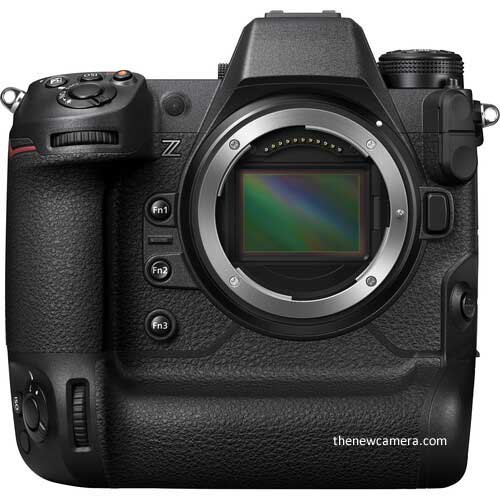
Nikon Z7 Mark III Leaked Specifications: Is the Rumored Camera Real?
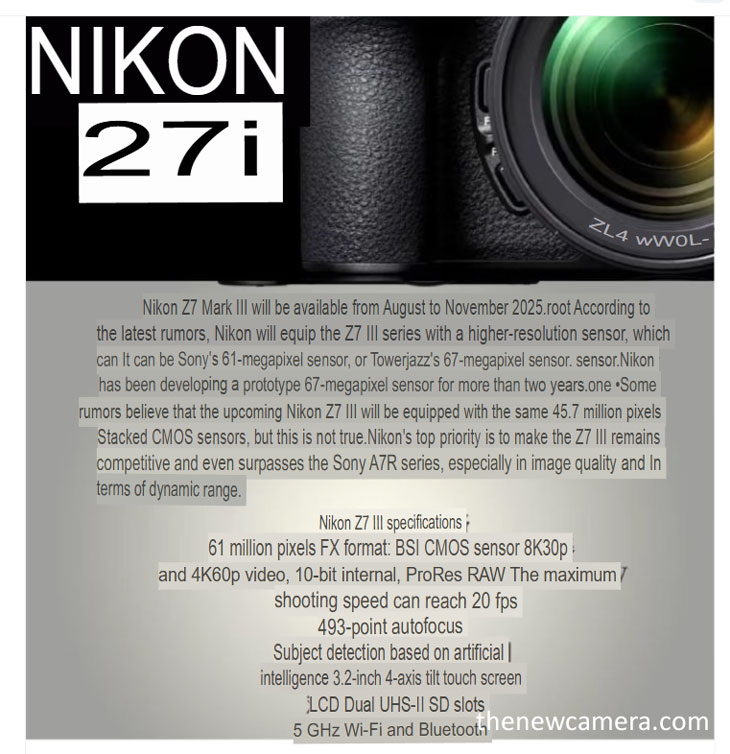
By admin, on June 10th, 2025
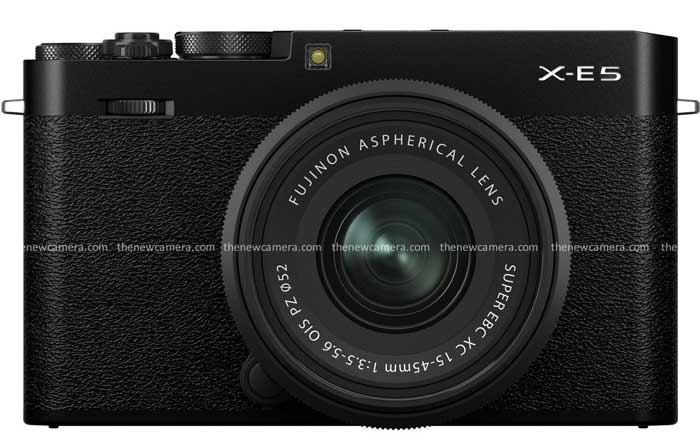
We have first shared the Fuji X-E5 expected core Specification in our May 2021 Post too, you can check here. Now, it’s almost confirmed that the camera is coming with the same core specs. With no updates from the rumor mill’s reliable sources, it’s confirmed that the upcoming Fuji X-E5 camera will feature a 40 MP X-Trans CMOS sensor and IBIS unit. Take a look at the detailed core specification of the upcoming camera
Fuji X-E5 specification
- 40MP APS-C X-Trans CMOS 5 HR Sensor
- 4K Video Recording at 60p, 6.2K at 30p (4:2:2 10-Bit)
- In-Body Image Stabilization (IBIS)
- 425-Point Intelligent Hybrid Autofocus System
- 3.69 m-Dot OLED Electronic Viewfinder
- 3″ 1.84 m-Dot Tilting Touchscreen LCD
- 20 fps Electronic Shutter, 15 fps Mechanical Shutter
- 160MP Pixel Shift Multi-Shot
- Bluetooth and Wi-Fi Connectivity
- ProRes & Blackmagic RAW via HDMI
Updated Specification and Pricing of the Fuji X-E5 Camera
- Pricing for the X-E5 is as follows
– Body: $1699
– Kit with XF23mmF2.8: $1899
- Key specifications of the X-E5-
Sensor: X-Trans CMOS 5 HR, APS-C, 40.2 megapixels-
Processor: X-Processor 5-
ISO sensitivity: Standard 125-12800, extended 64-51200-
In-body image stabilization: Up to 7.0 stops (center), 6.0 stops (periphery) IBIS system with new algorithm and improved gyro sensor for improved performance-
Continuous shooting: Up to 20fps with electronic shutter (with crop)
– Video: Up to 6.2K 30p, DCI4K60p, Full HD240p slow motion-
EVF: 0.39-inch OLED, approx. 2.36 million dots-
LCD monitor: 3.0-inch tilt-type touch panel, approx. 1.04 million dots-
Dimensions: Width 124.9mm, height 72.9mm, depth 39.1mm-
Weight: Approx. 445g including
battery- Film Simulation: 20 modes in total, up to 3 custom recipes can be saved-
Other: USB-C, Bluetooth 4.2, Wi-Fi, 3.5mm microphone terminal-
Supports digital teleconverter (1.4x / 2x)
– Customizable film simulation dial allows you to quickly recall your own settings-
EVF has multiple display modes, providing an optical viewfinder-like experience: three “Surround View” modes with a choice of black, semi-transparent or line outline showing the image aspect ratio and its surroundings, and a “Simple View” option that mimics the viewfinder of an analog film SLR- Equipped
with AI subject detection AF, AF possible down to -7EV in low light-
Beautifully machined aluminum top plate-
Bluetooth connection button is located on the bottom like a film rewind button
Fuji X-E5 Arrival Time and Price
Fuji X-E5 is coming on June 12, 2025. The price is expected to be $1299, $1699 approximately
Follow us for more updates and Get LIVE RUMORS –> FACEBOOK | TWITTER | INSTAGRAM to get live news — > get live news + –> See More Fuji Rumors
source FR.com
By admin, on June 10th, 2025
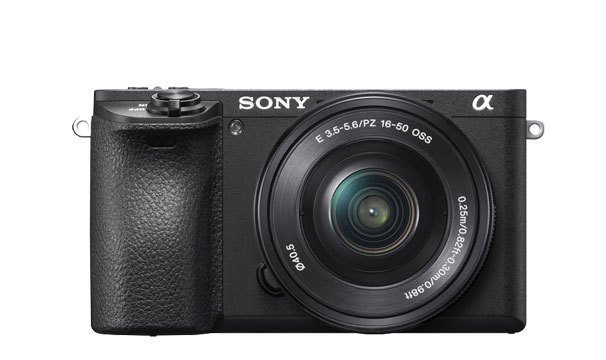
Sony A6700 is one of the best APS-C flagship cameras of 2025. The camera has received a significant firmware update that enhances its overall functionality and improves the user experience, and boosts its performance. This particular version 2.0 firmware update is kind of an essential update for your A6700 camera.
The camera features a 26-megapixel APS-C CMOS sensor and an inbuilt sensor-shift image stabilization system supported by Active IS for video work. One of the best cameras for professional videographers, cinematographers, and photographers, too. We have already made a best lenses buying guide for the Sony A6700 camera — you can check it here — and also comparisons with others.
Take a look at the set of upgrades we have inside the Sony A6700 camera.
- The maximum number of images that can be stored in one folder is now 9,999.
- Improved image quality when using User LUT.
- Wi-Fi signal strength is now displayed.
- You’ll now be notified if new camera software is available.
- You can now shoot new footage while transferring footage you’ve already shot to your smartphone or tablet. Please update the Creators’ App to the latest version (ver.2.9.0 or later).*
- Transfers to smartphones and tablets can now be resumed even if they are interrupted midway. Please update the Creators’ App to the latest version (ver.2.9.0 or later).*
- You can now transfer only the differences that have not been transferred to your smartphone or tablet, and add videos to transfer while transferring. Please update the Creators’ App to the latest version (ver.2.9.0 or later).*
- You can now upload images from your camera directly to Creators’ Cloud. You must first set it up in the Creators’ App. For details, please click here.
Please update the Creators’ App to the latest version (ver.2.9.0 or later).
This service may not be available in some countries or regions. For details, please click here.
- “WPA” and “WEP” functions are no longer supported. You can no longer select “WPA” or “WEP” when connecting to Wi-Fi. Please use “WPA2” or “WPA3” in the future, which have higher security.
- Improved operational stability.
Click here to download the update
Explore More related to Sony A6700 Camera
Canon R8 Vs Sony A6700
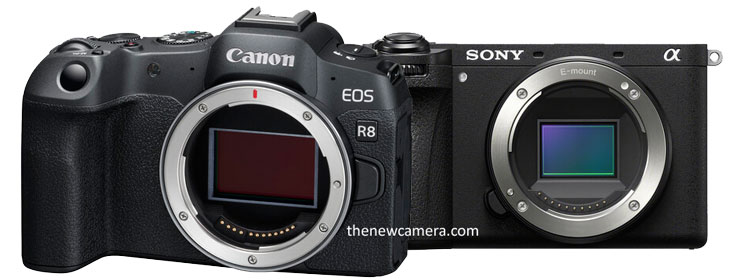
Sony A6700 vs Nikon Z50 II
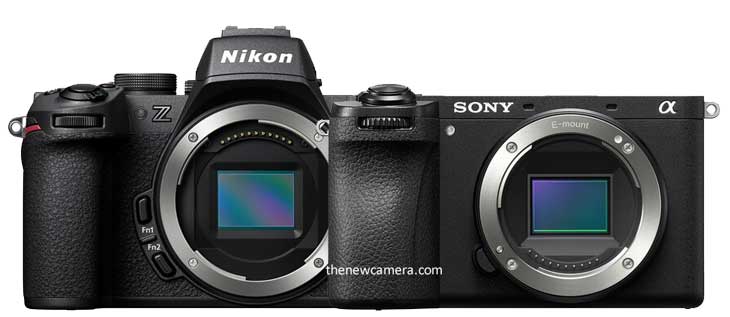
By admin, on June 9th, 2025
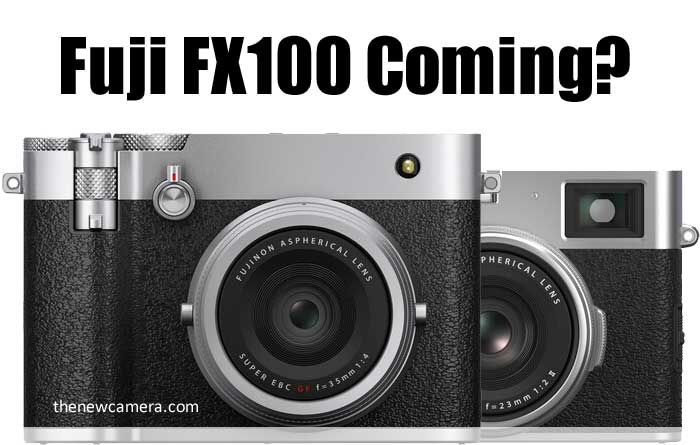
Fuji has a long history in creating amazing cameras, starting from the APS-C line of cameras and the medium format GFX series, all of which deliver exceptional image quality and retro aesthetics.
The Fuji X-100 VI camera with its 40 megapixel sensor has very high demand worldwide, and most of the time, due to the supply chain issues, the camera remains backordered. Fuji recently announced their first medium format compact camera, the GFX 100 RF, which uses a 102 megapixel medium format sensor-based camera. Both of them showcase Fujifilm’s ability to innovate in the premium compact camera space.
However a new patent surfaced over the web of 40 mm F2 full frame compact lens the lens is specifically designed for a full frame sensor it has sparked an intense speculation about a new addition to Fujifilm in a full frame compact camera, may be to complete against the existing like a Leica Q3 with approximately the same focal length having name the Fuji FX 100. And We do believe that the Fujifilm FX100 could be Fujifilm’s answer to the Leica Q3, as they already possess all the capabilities required to create a retro full-frame compact camera.
Let’s explore the POSSIBILITIES of the arrival of the Fuji FX100 full-frame compact camera.
Fujifilm’s History and Stance on Full-Frame Cameras
Fujifilm has long charted its own course in the mirrorless world, choosing to double down on its beloved APS-C “X” line and its high-end GFX medium-format system rather than wade into the full-frame fray. As recently as 2023, during INTERVIEWS, they have CLEARLY SAID that they have no plans to enter the crowded full-frame interchangeable-lens mirrorless market dominated by Canon, Nikon, and Sony. Their reasoning is clear: APS-C (X Series) offers a compact, cost-effective alternative, while medium format (GFX Series) provides superior resolution and dynamic range for professionals. Building a FULLFRAME interchangeable LENS system from scratch means designing new mounts and glass, then convincing photographers to invest in yet another lineup, possibly at the expense of their current X and GFX customers. It’s a risky move that could or may end up cannibalising their lineup of GFX and Z series cameras.
That said, Fujifilm isn’t ruling out playing in the full-frame sandbox entirely—a fixed-lens full-frame compact camera, as we have discussed above the Fiji FX100, would not contradict Fujifilm’s stance. It would be a distinct product category, akin to the Leica Q3 (60MP full-frame sensor, 28mm or 43mm f/1.7-2 lenses) or Sony RX1R II (42MP full-frame, 35mm f/2 lens): FX100 will let them dip a toe into full-frame territory without overhauling their entire lens portfolio. It’s a smart way to test the waters—pairing their signature film simulations and sleek design with a full-frame sensor, while staying true to the systems their users already know and love.
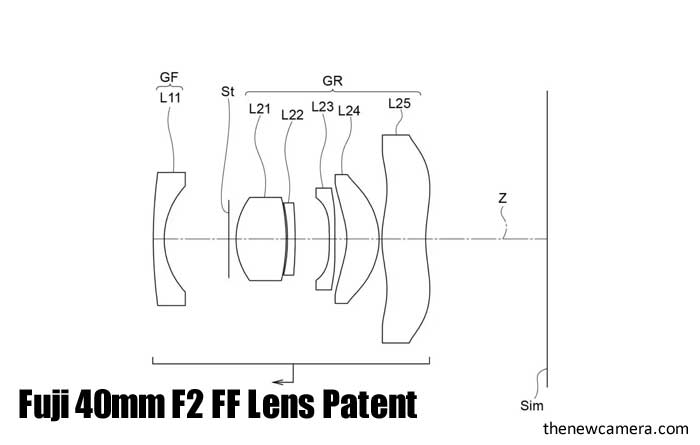
Fuji 40mm f/2 Full-Frame Lens Patent
Back in June 2025, Japanese website ASOBINET spotted something intriguing in Fujifilm’s patent filings: alongside new GF 20mm f/2.8 and XF 15mm f/2.8 designs, there was a 40mm f/2 lens specifically laid out for a full-frame sensor. That little detail is probably the strongest hint yet that Fuji is toying with the idea of a full-frame compact. A 40 mm normal-view optic makes perfect sense here—it’s roughly the classic field of view you’d get with Leica’s Q3 at 43 mm f/2, so it’s equally happy capturing street scenes, travel snaps, or environmental portraits. And unlike lugging around a monster telephoto, a 40 mm f/2 can stay snug and pocketable without sacrificing speed or sharpness.
Of course, patents aren’t product guarantees—they’re often filed just to stake an R&D claim or to keep rivals at bay. But the timing, right after the buzz over the X100VI and GFX100RF, and the very specific full-frame design all point to the fact that Fujifilm is taking the compact full-frame space seriously. If it does materialize, this camera could sit squarely between the Leica Q3 (around $6,660) and the still-cherished Sony RX1R II ($3,300-ish on the used market), offering Fuji’s renowned film simulations, sleek styling, and top-tier image quality in a pocket-friendly package.
Fuji FX-100 will be a Sweet Spot in the Fuji Lineup
Think of the FX100 as the “sweet spot” in Fujifilm’s family. It wouldn’t step on the toes of the X100VI or GFX100RF—instead, it fills the gap between them. The X100VI is beloved by street shooters and travel photographers for its APS-C sensor and fixed 35 mm-equivalent lens, while the GFX100RF is built for pixel-peepers, packing a 102 MP medium-format sensor and a 28 mm-equivalent f/4 optic. A full-frame FX100 would bridge those worlds: better low-light performance and greater dynamic range than the X100VI, and a faster lens and smaller body than the GFX100RF.
Fuji FX100 – Expected Core Specifications
- 42–61MP Full-Frame BSI CMOS Sensor
- Fixed 40mm f/2 Lens with Nano-GI Coating
- 6.2K30, 4K60 & 4:2:2 10-Bit Video, F-Log2 Support
- AI-Based Phase Detection Autofocus with Subject Tracking
- In-Body Image Stabilization (6–7 Stops)
- Hybrid OVF/EVF with 5.76M-Dot OLED Panel
- 3.15″ 2.1M-Dot 2-Axis Tilting Touchscreen LCD
- ISO 50–100000, Up to 15-fps Continuous Shooting
- Built-in 4-Stop ND Filter & Digital Teleconverter (50mm, 63mm Modes)
- SD UHS-II Slot; USB-C, HDMI, Wi-Fi & Bluetooth
- Retro Design with Leaf Shutter & Dedicated Exposure Dials
- Weather-Sealed (Likely IP52 Rating)
- Estimated Price: $2,000–$3,000
See, the possibility of the Fuji FX100 camera does exist, and it has been fueled by the latest June 2025 patent of the 40mm f/2 full-frame lens by Fujifilm itself. They already have a decent, proven track record of building premium compact cameras with the success of the Fuji X100 series and the recently announced GFX100 RF series compact camera. Now you have to understand one thing — that even if they announce a fixed-lens full-frame camera, it does not violate their stand against interchangeable-lens full-frame systems. One more thing — that Fuji’s research and development doesn’t take much time to make a patent into reality. If they really want to announce a perfect competitor to the Leica Q3 or the RX1R series, they won’t take much time. They will for sure announce a full-frame compact camera sometime in 2026, specifically in the later part of the year. And yes, rumor mill first denies this concept of the FX100 model, and after a month or two, they will publish a breaking news “Fuji FX Compact coming”, that’s what they always do.
Stay tuned for more updates coming
Follow us for more updates and get LIVE RUMORS –> FACEBOOK | TWITTER | INSTAGRAM to get live news — > get live camera news + –> See More Fuji Rumors
At TheNewCamera.com, we’re dedicated to keeping you informed about the latest camera news. The article “Fuji FX100: The Possibility of a Full-Frame Compact Camera in 2026” was first published on11:49 am, Monday, 9 June 2025, Greenwich Mean Time (GMT) by thenewcamera.com team
By admin, on June 8th, 2025
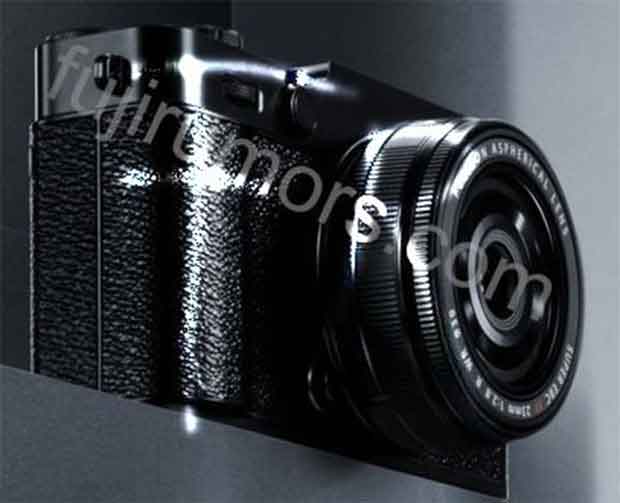
Finally, just before the official announcement of the Fuji XE5 mirrorless camera, we leaked images via the rumour mills. Today is June 8, and on June 12, the camera will become official. But even before that, let me remind you: We were the first website to publish the core specification of the upcoming Fuji XE5 camera. And as you have seen and witnessed, the sensor resolution and the IBIS system—all we mentioned months ago—came to be true.
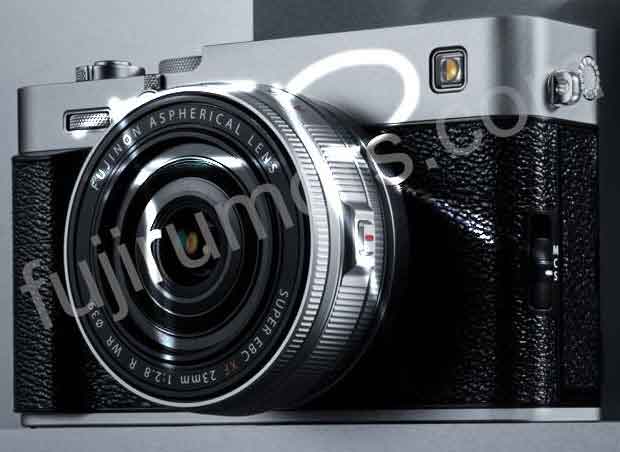
Fuji X-E5 specification
- 40MP APS-C X-Trans CMOS 5 HR Sensor
- 4K Video Recording at 60p, 6.2K at 30p (4:2:2 10-Bit)
- In-Body Image Stabilization (IBIS)
- 425-Point Intelligent Hybrid Autofocus System
- 3.69m-Dot OLED Electronic Viewfinder
- 3″ 1.84m-Dot Tilting Touchscreen LCD
- 20 fps Electronic Shutter, 15 fps Mechanical Shutter
- 160MP Pixel Shift Multi-Shot
- Bluetooth and Wi-Fi Connectivity
- ProRes & Blackmagic RAW via HDMI
+ MORE details by rumor mills
The return of the MCS switch like the X100VI
– A viewfinder selector similar to the X100VI, which we believe functions similarly to the one on the GFX100RF
– There is a small grip, unlike the flat front of the X-E4
– The strap hardware has returned to a traditional one instead of the big rectangular one on the X-E4
– The small wheel on the left side is probably the diopter adjustment dial
– The “X-E5” logo on the left side of the front is gone, replaced by a square AF assist light. Honestly, we welcome this decision
– Clearly the most beautiful camera in the XE series to date
Follow us for more updates and get LIVE RUMORS –> FACEBOOK | TWITTER | INSTAGRAM to get live news — > get live camera news + –> See More Fuji Rumors
source / image credit FUJI RUMORS.com
By admin, on June 8th, 2025
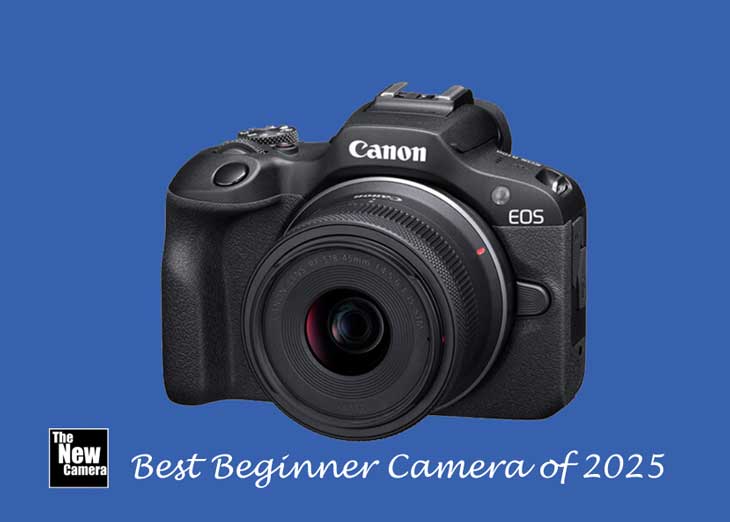
For beginners, finding the right camera that balances affordability, ease of use, and quality is crucial, and the Canon R100 camera stands out as one of the top choices for new photographers.
Frankly speaking, at this price, you have no options left specifically in the beginner camera zone. The Canon R100 camera is Canon’s recent innovation and features the best possible core specifications that Canon can offer in this specific price range. Neither Nikon nor Sony can provide a camera with a kit lens under the $400 price tag.
Why choose a dedicated camera over a smartphone?
Before we get into the major specifications, it’s really important for a beginner to understand why they should pick a camera over a smartphone. While we all know that smartphones have all the advanced functionalities one may wish to have, here’s why you should prefer a camera instead of a smartphone:
- Superior image quality:
If you know how to extract the quality from a large 24-megapixel APS-C CMOS sensor from your Canon R100 camera, you will always get exceptional results irrespective of the light conditions you’re facing. It will perform better and deliver professional-quality images. But it’s always recommended to upgrade your kit lens to a prime lens like 50mm f/1.8 that extracts maximum quality and generates a very creamy background blur.
- Interchangeable lens support:
That’s the freedom you get with an interchangeable lens mirrorless camera. It actually gives you flexibility to select various lenses — from portrait photography to landscape photography or even macro photography. Every genre has its own dedicated set of lenses. You just have to pick the right lens to get exceptional image quality from your camera.
- Manual controls:
Learning manual photography is a really exciting thing. And when you actually have a basic understanding of the fundamentals of photography — like controlling aperture, shutter speed, and ISO — it means you know how to handle the exposure triangle of the camera. Without a doubt, you’ll get exceptional images once you’ve taken control of your camera.
- Durability and longevity:
Professional cameras are made durable. Even if you use them roughly, they are more reliable than a smartphone.
The Canon R100 camera actually bridges the gap between smartphone photography and professional gear. But at the same time, you have to understand the workflow — how to take the best pictures from your camera. If you know the process, have the skill or mastery over the exposure triangle, and use dedicated lenses, then for sure, every picture that you capture with this camera will be a masterpiece without a doubt.
Get the Canon R100 Camera from the B&H Store and Amazon.com
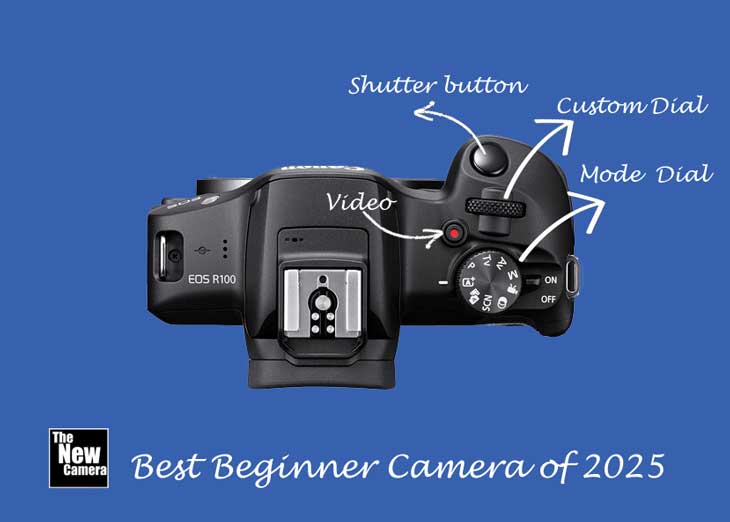
Key Features of the Canon R100 Camera
The Canon R100 camera is designed for beginners, and if you love to try a camera, then at this price, this is the best one.
1. The Best Budget Camera
Budget-friendly:
We can’t ignore that the budget factor is one of the most important factors for a beginner. If the camera is available under the $400 price range with a kit lens, then it’s really unbelievable. At the same time, no competitor in the mirrorless era with this set of core specs and a last-gen 24MP sensor exists to compete against the Canon R100. You’ll have to pay extra to get a better camera, so in this specific price segment, it’s unmatched.
2. Beginner-Friendly Design
Guided user interface:
One of the best cameras with a very easy and interactive guided menu design — specifically built for beginners. While using shutter settings, the camera explains how shutter affects your image. While using aperture, it guides you in the specific menu on how changing aperture alters your images. So the guided menu helps a lot if you’re a beginner and don’t know much about manual modes.
Physical controls:
Having physical controls is one of the most important aspects of mirrorless cameras. Once you get habituated to these controls, you can put all your focus into just the composition of your images. Your hands will automatically adjust the desired settings in a few seconds.
3. Excellent Image Quality
24.1MP APS-C CMOS sensor:
The last-gen 24MP image sensor generates excellent image quality when paired with the DIGIC 8 image processor of the camera. It delivers stunning images. When using a large sensor for imaging, the white balance, sensitivity, and depth all become very rich and profound-looking. But at the same time, you have to develop your skill and use better lenses to achieve the maximum potential of the sensor.
Versatile performance:
The 24.1MP sensor delivers exceptional image quality when you’re shooting portraits — specifically of your friends and family — while pairing up with the Canon 50mm f/1.8 lens. The lens is highly suitable for fashion and portrait photography. The kit lens is also highly suitable for beginners when starting to learn the basics of photography. The 3.1x optical zoom gives you the freedom to compose and recompose images without any digital crop.
Low-light performance and capability:
The sensor features an ISO range starting from 100 to 12,800 and is further expandable up to 25,600. So the camera gives you freedom to click snaps in various lighting conditions, ensuring beginners get high-quality images — either indoors or at dusk.
4. Compact and Portable
Lightweight build:
The weight of the camera is only 356 grams, measuring 4.58 x 3.36 x 2.7 inches. So the camera is very lightweight and easy to carry, and it can easily fit in your jacket pocket — perfect for travel photography.
Travel-friendly:
Several travel-friendly bags for this camera are very affordable and protective. They safeguard your gear from external shocks. Since the camera is very lightweight, it’s one of the best travel cameras to carry seamlessly without putting the burden of extra weight on your shoulders.
5. Versatile and Future-Proof
Shooting modes:
The Canon R100 offers semi-automatic and manual modes. You can start with semi-automatic modes, like Aperture Priority (Av) where you have full control over aperture — very helpful with lenses like the 50mm f/1.8. Shutter Priority mode is really helpful for freezing motion sequences. So you can begin with auto modes and gradually explore advanced controls, eventually transitioning to full manual.
Canon RF Mount:
The Canon R100 is compatible with a wide range of Canon’s native RF and RF-S lenses, including the affordable RF 28mm f/2.8 STM. We also now have options from Sigma and Tamron for the APS-C range of Canon cameras.
6. Reliable Autofocus
Dual Pixel CMOS AF:
The Canon R100 uses Canon’s Dual Pixel CMOS autofocus system, which covers approximately 88% of the entire sensor. Despite being an entry-level camera, its autofocus performance is very similar to Canon’s professional lineup.
Face + Eye Detection AF:
Eye autofocus tracking ensures sharp portraits focused on the subject’s eye — something hard to achieve manually for beginners. The DPAF system also helps a lot in subject tracking.
7. Video Capabilities
4K and Full HD:
The Canon R100 can capture full HD videos with full-time autofocus support. While capturing 4K, there is an additional 1.5x crop. So for video purposes, it’s not that great — but for the price, it’s acceptable.
Content creation features:
The camera records high-quality full HD and cropped 4K, as mentioned. But the major issue is the fixed display screen. If you’re filming someone else, it’s a great tool. But if you want to create your own videos or reels, you’ll need to use your smartphone and Canon’s app for framing yourself — as the LCD screen is fixed and can’t be turned forward.
8. Seamless Connectivity
Wi-Fi and Bluetooth connectivity:
The R100 camera allows you to transfer photos or videos to smartphones or other wireless devices. It also helps you reframe yourself while creating content using the app’s live display mode on your phone.
And yes, you can use your camera as a webcam with the help of a USB-C to USB connector — just make sure to use the right software for webcam functionality.
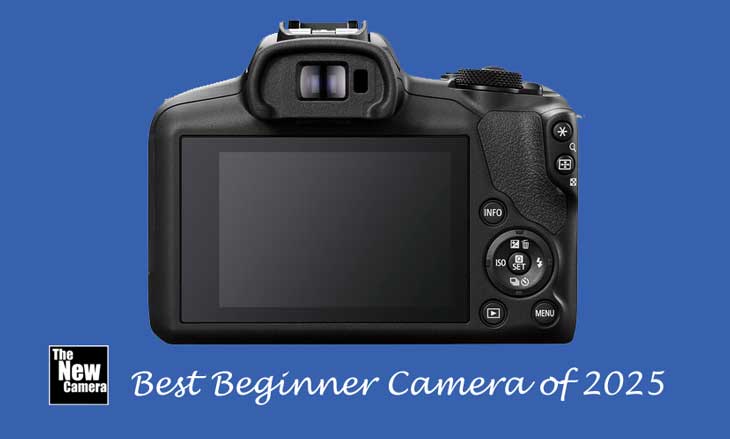
Comparison with Other Beginner Cameras
To understand why the Canon EOS R100 is the best choice, let’s compare it to other popular beginner cameras in 2025:
| Camera |
Price (Approx.) |
Sensor |
Key Features |
Best For |
| Canon EOS R100 |
$400-$500 |
24.1MP APS-C |
Guided UI, compact, affordable, RF mount |
Budget-conscious beginners |
| Nikon Z30 |
$500-$600 |
20.9MP APS-C |
4K video, vari-angle screen, Nikon Z mount |
Video-focused beginners |
| Sony ZV-E10 |
$700-$800 |
24.2MP APS-C |
Advanced autofocus, flip-out screen, Sony E |
Vloggers and content creators |
About the Competitors
The Nikon Z30: The Nikon Z30 camera features a variable-angle display screen as well as a 20.9-megapixel high-sensitivity BSI CMOS sensor with ISO range up to 204800. The camera also supports 4K 30 fps and crop capture, like we have in the Canon R100 camera. But the MSRP value means the price of the camera is higher than the Canon R100. If the Nikon Z30 is available at a similar price point as the Canon R100, then for sure it’s an excellent option.
Sony ZV-E10: Sony ZV-E10 camera features a 24-megapixel BSI CMOS sensor which is an awesome low-light performer, as well as a bunch of dedicated modes specifically designed for content creators. So, if you can afford a bit more, then without a doubt the Sony ZV-E10 is the best entry-level content creator camera.
Addressing the Limitations
While the Canon R100 camera is without a doubt one of the best entry-level cameras present in the budget, it also has some limitations. Let’s explore that.
Fixed non-touch screen: The 3-inch LCD display screen doesn’t tilt and the screen also isn’t touch responsive. So if you are coming from a smartphone, you have to put in a good amount of time adapting to the controls of the camera.
Slower burst rate: The maximum continuous frame rate is 6.5 frames per second when autofocus is locked, and when we are using continuous autofocus, the speed drops to 3.5 frames per second.
Cropped 4K: While recording 4K 30 fps, we have to face a 1.55x crop, so that’s really unacceptable for someone who is looking for a professional video solution.
These drawbacks are minor for beginners, especially if you are a photographer or love to start photography.
How to Choose the Best Beginner Camera?
While selecting a camera for beginners, you can consider the following things to buy a perfect entry-level camera:
Budget: The Canon R100 camera is available at a super budget, and if it fits your requirement, then it is one of the most reasonably priced cameras ever made by Canon itself.
Requirement: One should know their requirement very clearly before buying a camera. If you love to have a camera to capture beautiful images, then without doubt, Canon R100 is a good-to-go camera. But if you want to create high-quality content, then you have to increase your budget and you should get at least the Nikon Z30 or even more advanced, the Sony ZV-E10.
Ease of Use: The Canon R100 camera features a dedicated guided menu, as we have also mentioned above, that helps a beginner a lot to operate the camera in semi-automatic and even in fully manual mode.
Lens Compatibility: Just a year ago, the Canon APS-C RF mount was locked for third-party lens makers, but now it has been opened, and we have a good range of Sigma and Tamron lenses for Canon APS-C cameras.
The Canon R100 is the best beginner camera in 2025. It offers a very good, subtle set of core specifications for beginners, starting from the 24.1-megapixel APS-C CMOS sensor, Dual Pixel CMOS autofocus system for eye autofocus tracking while shooting portraits, and subject tracking for moving objects. The R100 has a very portable and lightweight body design, which you can carry without any hassle. So if you are limited to a certain budget, then for sure the Canon R100 is one of the best options for you.
Canon R100 Best Lenses in 2025
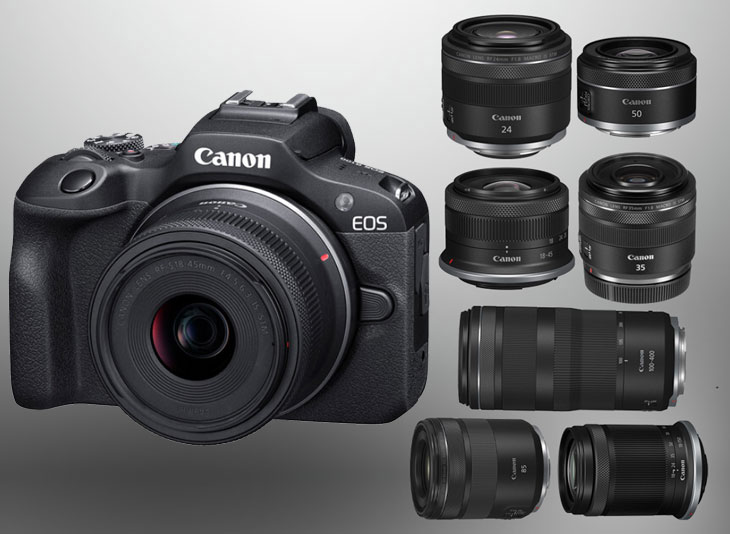
By admin, on June 7th, 2025
Sigma is working on super zoom lenses, the latest patent revealed that Sigma is working on a pair of 800 mm lenses. One of the lenses is 400 to 800 mm with a constant f/8 aperture, and the other is 180 to 800 mm with f/5.8 – 8.4 aperture. From the optical construction, it is very clearly visible that they are trying to make more compact super zoom lenses, which are easy to carry and fall in the budget pocket range.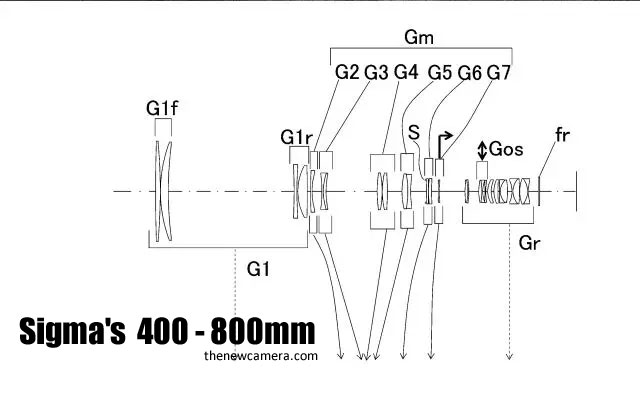
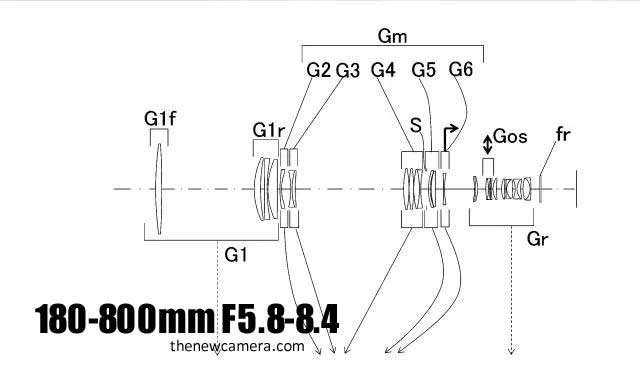
Examples include 800mm zoom lens optical systems such as the 400-800mm F8 and 180-800mm F5.8- 8.4. Although the maximum aperture is large, the overall length is shorter than the 300-600mm F4, making it more portable.
The article “Sigma Developing Two 800mm Super Zoom Lenses – Sigma Latest News” was published at 8:23 am, Saturday, 7 June 2025, Greenwich Mean Time (GMT)). By thenewcamera.com Team. You can Follow us on our social pages FACEBOOK | TWITTER | INSTAGRAM to get live Camera News + + Sigma Rumors 24X7.
source / credit asobinet japan
Sigma 17-40mm F1.8 Lens Coming for APS-C Mirrorless
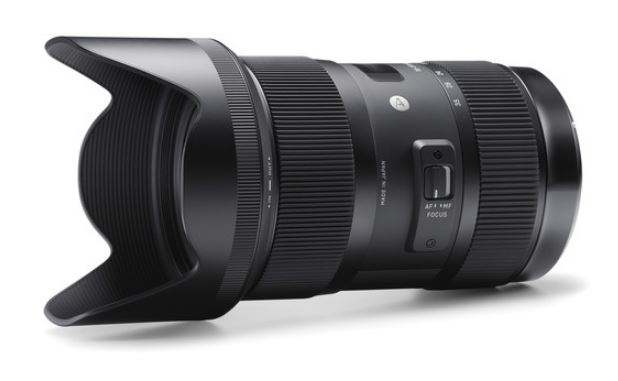
Sigma RF-S Lenses Coming June 2025: 17-40mm F1.8 & 12mm F1.4 for Canon APS-C
|
KEEP THIS BLOG ALIVE - Support New Camera Buy Canon Lenses, Buy Music CD or Digital Camera at amazon it helps this site, and you do not pay anything extra, it is just a way to help support this site.

|























